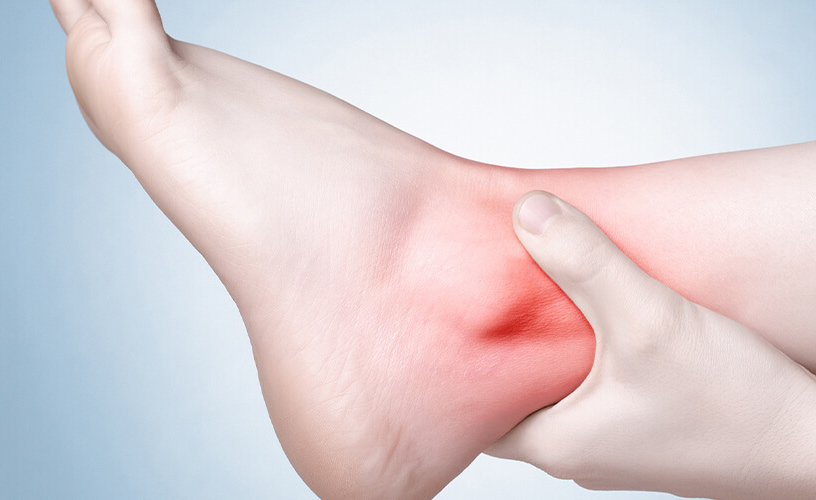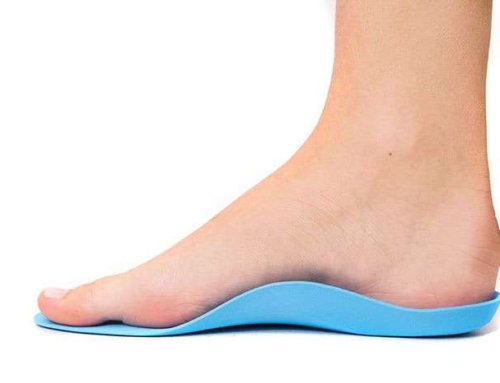If you have pain in one or both ankles, you should be concerned. This is a telling sign something isn’t right. It could be due to a sprain or other type of injury. It could be due to shoes without enough support. If you stand for long periods of time or walk throughout the day, your shoes have to offer support for your feet and your ankles.
Pain in the ankles can indicate inflammation due to an underlying health issue. It may be a genetic issue with the design of your feet and ankle. It may be the result of another health problem such as diabetes or arthritis. Inflammation around the ankle can cause a great deal of pain. It can also make it difficult to walk or stand. Ankle pain can also increase the risk of a fall because you may be off balance.
Sprained Ankle
The most common type of pain a person will experience with their ankle is due to a sprain. There are many scenarios when this can occur. Playing sports is frequently linked to it. This is because the body is moving in various directions at fast speeds. Some sports involve physical contact with others, and that can cause parts of the body to turn the wrong way due to the impact.
A sprained ankle can happen when the foot turns if shoes are too loose or don’t offer enough support. It can happen when you walk in an instant, and you will feel the pain right away. In other scenarios, the sprained ankle doesn’t hurt until later on. It may be swollen and bruised.
Approximately 85% of all ankle pain is related to a sprain. The severity of it and the amount of pain will vary. It depends on what occurred and the amount of damage to the ligaments. Sometimes they get torn and in other situations they are sore because they got stretched. Over the counter medications can help reduce pain and swelling. The bruising and swelling will typically last for a week or two.
However, it can take several months for a sprained ankle to fully recover. It is important to offer it as much support as possible while it heals. Limit the amount and intensity of activities because the ankle is going to be vulnerable. There is a high chance of causing further injury to it if you aren’t careful. Be patient and give it time to heal so it will be healthy and strong again.
Other Causes of Ankle Pain
Typically, a person will know it when they sprain their ankle. They will remember the event or immediately feel the pain. If the pain doesn’t happen until later, they will be able to associate it with some type of incident or trauma that occurred. There are also other causes of ankle pain that can come on without much warning.
There are several forms of arthritis that can cause the ankle to become inflamed and create pain. This includes osteoporosis and gout. It can take several days or weeks for the inflammation to go down and the pain to go away. The problem may occur once in a while or a person can have chronic flares. The amount of pain will also depend on the severity of the inflammation.
Other common causes of ankle pain a person can experience include:
- Blood vessel blockage
- Injury or trauma
- Joint infection
- Nerve pain
Arthritis is very common, and the ankle joint may be affected. If uric acid or calcium builds up there, it takes time for the body to break it down. The crystals can be very sharp around the ankle bone, causing a great deal of pain. Sometimes, arthritis can result in an infection around the ankle. It can be the result of bacteria or fungus.
What to do about Ankle Pain due to a Sprain
Ankle pain should be taken care of right away to prevent it from getting worse. Give it time to heal properly so you don’t have ongoing issues with it. Get plenty of rest and try to avoid standing or walking for long periods of time. Limit physical activity to give it time to heal before you engage in sports or other activities again. Keep the ankle elevated on a pillow to help with the healing process.
Over the counter medication can help take the edge off the pain. Ice the ankle several times per day for about 20 minutes per session. This will help reduce pain and swelling. Adding support with compression can help it heal faster, but make sure it isn’t too tight. There are ankle braces available or you can use an ace bandage.
What to do about Ankle Pain due to Other Causes
If your ankle pain is the result of a form of arthritis, talk to your doctor. They may give you medication to take regularly. This can reduce inflammation and prevent joint damage from getting worse. They may encourage you to shed extra weight to reduce the impact on the knees and ankles. They may encourage you to change your diet to reduce future inflammation concerns.
Daily stretching can help keep your ankles flexible. It can help them be stronger too. Your doctor may recommend physical therapy to help you learn how to do the exercises properly and to make the ankles stronger. They may recommend inserts in your shoes to offer more support for the ankles. Such inserts can be custom made to ensure they give you the greatest amount of value.
For severe pain, corticosteroid injections may be necessary. This may be repeated every 3 to 6 months as needed to help reduce inflammation and pain from a chronic issue with the ankle. In the most severe situations, the doctor may ask you to consider surgery in order to help resolve the problem. They will look at all other options first to try to reduce and eliminate your ankle pain.






